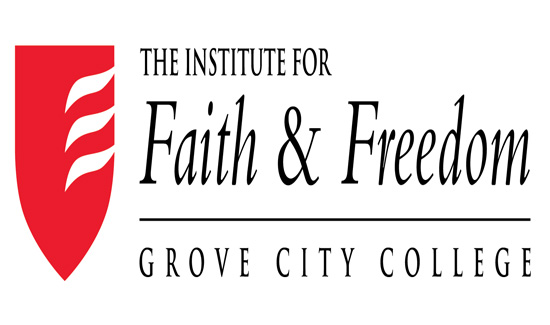A Plant o Mitigate Bus Service Cuts
As expected, the Port Authority of Allegheny County (PAT) has announced that it is out of options and will make drastic cuts in service beginning in March. Faced with a near $50 million budget shortfall for the current fiscal year and a looming $30 million deficit in the fiscal year starting in July, PAT’s Planning and Development Committee has recommended a 35 percent service cutback and a personnel reduction of almost 500 employees. More cuts might be necessary later in the year. Waiting and hoping for more money from cash strapped state government has been a poor strategy.
All this has been brought about by the overly generous pay and benefit packages for PAT employees and their unwillingness to make any concessions on compensation or work rules. PAT bus service ranks among the most expensive per passenger trip in the nation and driver wages (on a cost of living adjusted basis) are the highest in the country. Exorbitant benefits have pushed PAT’s annual benefit payments to $128 million to go with wages and salary payments of $141 million. Growth will continue in the future because of contract obligations.
With the cost structure spiraling out of control and the union’s preference of taking layoffs rather than making any meaningful concessions, PAT management must cut service and reduce payroll to close the budget deficit.
But there is something PAT can do to lessen the hardship the planned service cuts will create. Bear in mind the legislation that created the Port Authority back in the 1960s gives it monopoly control over transit service in Allegheny County. No other bus operator, public or private, may operate in Allegheny County without the permission of the PAT Board and to date that permission has not been granted except for regional transit agencies that bring passengers in from surrounding counties.
Now is the time for PAT to loosen its grip and allow other transit agencies and/or private operators to begin offering service in areas where PAT is eliminating or severely cutting back service. After all, PAT’s mission is to provide the most affordable transit service possible to Allegheny County residents—at least it should be. The union’s objectives are clearly not compatible with that mission. So, PAT must seize upon other avenues to fulfill its mission. Allowing other qualified transit providers to operate in the County would represent a huge step in that direction.
PAT will soon have a large surplus of buses on its hands after the service cuts are made. To attract transit agencies or private companies to offer replacement services they could agree to lease surplus buses for one dollar per year—or sell them at a very low price.
Given the much lower pay and benefits packages at the regional agencies, a very low marginal capital cost and the ability to charge PAT fares could entice transit operators to take on the service. At the very least PAT should approach the other regional agencies and any qualified private companies to see if an arrangement can be worked out to restore service to riders who are about to lose their service.
This is not the normal privatization or outsourcing one thinks of in connection with bus service. Typically, outsourcing is when a transit authority contracts with a private company to provide service on existing routes much like what is being is done in neighboring Westmoreland County. In PAT’s present situation, the new transit provider would be covering routes PAT is eliminating.
If there is interest in such arrangements, PAT might want to reconsider how best to deploy the resources available within the County so as to allow other operators to operate with greatest efficiency.
Needless to say there are a lot of details to be worked out and little time to get them done before March 1. But even if the service to many folks cannot be restored until after March 1, it would be worth pursuing viable opportunities to get those riders some service as soon as possible.
In sum, if PAT’s Board and management team are as serious about their obligation to the people in the County who want or need to use public transit as they say they are, then they must at least give some consideration to this proposal. After all, PAT’s slogan is "Connecting People to Life". It does not say "Connecting People to Life if the unions will let us." To whom does the Board and management have the greatest obligation—residents or employees? They will make very clear their allegiance by how they treat the proposal to allow other transit agencies to provide service within the County.
Adopting this proposal could have a very salutary effect on unions who have been reluctant to make compensation or work rule concessions. Hoping the state will eventually knuckle under and come up with more money as service cuts continue to mount is obviously their strategy. But if PAT decides to allow other transit providers into the County, that hope will be gone.
And if the state wishes to stabilize the transit situation in Allegheny County and create cost efficient service, the Legislature must take two important actions: eliminate the right of transit workers to strike and remove PAT’s monopoly status over transit in Allegheny County.
________________________________________
Jake Haulk, Ph.D., President
________________________________________
For updates and commentary on daily issues please visit our blog at alleghenyinstitute.org/blog.
If you have enjoyed reading this Policy Brief and would like to send it to a friend, please feel free to forward it to them.
For more information on this and other topics, please visit our web site: alleghenyinstitute.org
If you wish to support our efforts please consider becoming a donor to the Allegheny Institute. The Allegheny Institute is a 501(c)(3) non-profit organization and all contributions are tax deductible. Please mail your contribution to:
The Allegheny Institute
305 Mt. Lebanon Boulevard
Suite 208
Pittsburgh, PA 15234
Thank you for your support.





